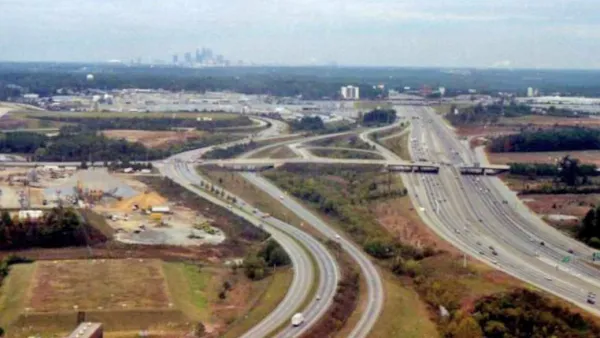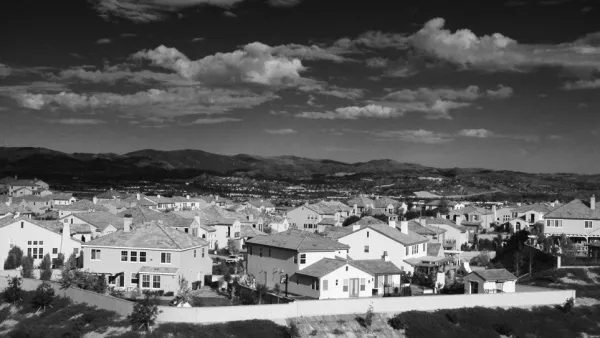Land use and transportation planning decisions provide a framework on which other social policies have created particularly isolating and intractable poverty in the South.
The fourth article in a series published last month by The Washington Post focuses on the barriers of access that make the poverty of the American South particularly isolating and difficult to overcome.
The author of the article, Chico Harlan, begins with story of Lauren Scott, a homeless, 28-year-old mother, relying on public transit to find a new job in Atlanta. On the day Harlan followed her, Scott's job search require 69 stops on a bus, a nine-minute train ride, another 49 stops on a bus, and a quarter-mile walk. According to Harlan, "this was a day much like the others, when the cost of destitution was a job hunt in which even the simplest task — placing an application — required four hours, round-trip, on a bus."
Here Harlan sums up the roots of the daily challenge faced by Scott and others like her:
"In the metropolitan areas of the Deep South, government policies and rising real estate prices have pushed the poor out of urban centers and farther from jobs. Low-income people have, in turn, grown more reliant on public transit networks that are among the weakest of quality in the country. When they search for work, they step into a region where pay tends to be low and unemployment tends to be high."
The magazine feature-style article focuses a lot more on Scott's experience of falling into poverty in the service of making large points about the unique qualities and causes of poverty in the contemporary South—a particularly isolating form of poverty exacerbated by the structure and systems of Southern communities.
FULL STORY: A lonely road

Analysis: Cybertruck Fatality Rate Far Exceeds That of Ford Pinto
The Tesla Cybertruck was recalled seven times last year.

National Parks Layoffs Will Cause Communities to Lose Billions
Thousands of essential park workers were laid off this week, just before the busy spring break season.

Retro-silient?: America’s First “Eco-burb,” The Woodlands Turns 50
A master-planned community north of Houston offers lessons on green infrastructure and resilient design, but falls short of its founder’s lofty affordability and walkability goals.

Test News Post 1
This is a summary

Analysis: Cybertruck Fatality Rate Far Exceeds That of Ford Pinto
The Tesla Cybertruck was recalled seven times last year.

Test News Headline 46
Test for the image on the front page.
Urban Design for Planners 1: Software Tools
This six-course series explores essential urban design concepts using open source software and equips planners with the tools they need to participate fully in the urban design process.
Planning for Universal Design
Learn the tools for implementing Universal Design in planning regulations.
EMC Planning Group, Inc.
Planetizen
Planetizen
Mpact (formerly Rail~Volution)
Great Falls Development Authority, Inc.
HUDs Office of Policy Development and Research
NYU Wagner Graduate School of Public Service




























